Chong Bao
Free360: Layered Gaussian Splatting for Unbounded 360-Degree View Synthesis from Extremely Sparse and Unposed Views
Mar 31, 2025

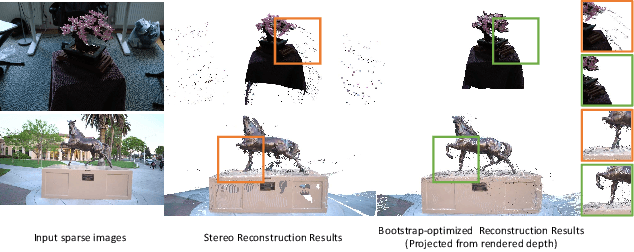

Abstract:Neural rendering has demonstrated remarkable success in high-quality 3D neural reconstruction and novel view synthesis with dense input views and accurate poses. However, applying it to extremely sparse, unposed views in unbounded 360{\deg} scenes remains a challenging problem. In this paper, we propose a novel neural rendering framework to accomplish the unposed and extremely sparse-view 3D reconstruction in unbounded 360{\deg} scenes. To resolve the spatial ambiguity inherent in unbounded scenes with sparse input views, we propose a layered Gaussian-based representation to effectively model the scene with distinct spatial layers. By employing a dense stereo reconstruction model to recover coarse geometry, we introduce a layer-specific bootstrap optimization to refine the noise and fill occluded regions in the reconstruction. Furthermore, we propose an iterative fusion of reconstruction and generation alongside an uncertainty-aware training approach to facilitate mutual conditioning and enhancement between these two processes. Comprehensive experiments show that our approach outperforms existing state-of-the-art methods in terms of rendering quality and surface reconstruction accuracy. Project page: https://zju3dv.github.io/free360/
GeneAvatar: Generic Expression-Aware Volumetric Head Avatar Editing from a Single Image
Apr 02, 2024



Abstract:Recently, we have witnessed the explosive growth of various volumetric representations in modeling animatable head avatars. However, due to the diversity of frameworks, there is no practical method to support high-level applications like 3D head avatar editing across different representations. In this paper, we propose a generic avatar editing approach that can be universally applied to various 3DMM driving volumetric head avatars. To achieve this goal, we design a novel expression-aware modification generative model, which enables lift 2D editing from a single image to a consistent 3D modification field. To ensure the effectiveness of the generative modification process, we develop several techniques, including an expression-dependent modification distillation scheme to draw knowledge from the large-scale head avatar model and 2D facial texture editing tools, implicit latent space guidance to enhance model convergence, and a segmentation-based loss reweight strategy for fine-grained texture inversion. Extensive experiments demonstrate that our method delivers high-quality and consistent results across multiple expression and viewpoints. Project page: https://zju3dv.github.io/geneavatar/
Mirror-NeRF: Learning Neural Radiance Fields for Mirrors with Whitted-Style Ray Tracing
Aug 07, 2023Abstract:Recently, Neural Radiance Fields (NeRF) has exhibited significant success in novel view synthesis, surface reconstruction, etc. However, since no physical reflection is considered in its rendering pipeline, NeRF mistakes the reflection in the mirror as a separate virtual scene, leading to the inaccurate reconstruction of the mirror and multi-view inconsistent reflections in the mirror. In this paper, we present a novel neural rendering framework, named Mirror-NeRF, which is able to learn accurate geometry and reflection of the mirror and support various scene manipulation applications with mirrors, such as adding new objects or mirrors into the scene and synthesizing the reflections of these new objects in mirrors, controlling mirror roughness, etc. To achieve this goal, we propose a unified radiance field by introducing the reflection probability and tracing rays following the light transport model of Whitted Ray Tracing, and also develop several techniques to facilitate the learning process. Experiments and comparisons on both synthetic and real datasets demonstrate the superiority of our method. The code and supplementary material are available on the project webpage: https://zju3dv.github.io/Mirror-NeRF/.
SINE: Semantic-driven Image-based NeRF Editing with Prior-guided Editing Field
Mar 25, 2023



Abstract:Despite the great success in 2D editing using user-friendly tools, such as Photoshop, semantic strokes, or even text prompts, similar capabilities in 3D areas are still limited, either relying on 3D modeling skills or allowing editing within only a few categories. In this paper, we present a novel semantic-driven NeRF editing approach, which enables users to edit a neural radiance field with a single image, and faithfully delivers edited novel views with high fidelity and multi-view consistency. To achieve this goal, we propose a prior-guided editing field to encode fine-grained geometric and texture editing in 3D space, and develop a series of techniques to aid the editing process, including cyclic constraints with a proxy mesh to facilitate geometric supervision, a color compositing mechanism to stabilize semantic-driven texture editing, and a feature-cluster-based regularization to preserve the irrelevant content unchanged. Extensive experiments and editing examples on both real-world and synthetic data demonstrate that our method achieves photo-realistic 3D editing using only a single edited image, pushing the bound of semantic-driven editing in 3D real-world scenes. Our project webpage: https://zju3dv.github.io/sine/.
EC-SfM: Efficient Covisibility-based Structure-from-Motion for Both Sequential and Unordered Images
Feb 21, 2023
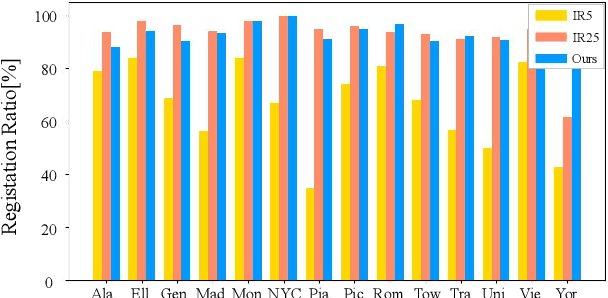
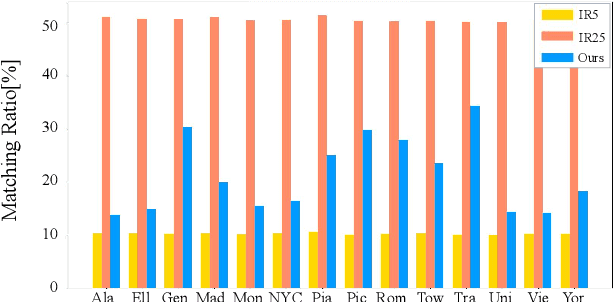

Abstract:Structure-from-Motion is a technology used to obtain scene structure through image collection, which is a fundamental problem in computer vision. For unordered Internet images, SfM is very slow due to the lack of prior knowledge about image overlap. For sequential images, knowing the large overlap between adjacent frames, SfM can adopt a variety of acceleration strategies, which are only applicable to sequential data. To further improve the reconstruction efficiency and break the gap of strategies between these two kinds of data, this paper presents an efficient covisibility-based incremental SfM. Different from previous methods, we exploit covisibility and registration dependency to describe the image connection which is suitable to any kind of data. Based on this general image connection, we propose a unified framework to efficiently reconstruct sequential images, unordered images, and the mixture of these two. Experiments on the unordered images and mixed data verify the effectiveness of the proposed method, which is three times faster than the state of the art on feature matching, and an order of magnitude faster on reconstruction without sacrificing the accuracy. The source code is publicly available at https://github.com/openxrlab/xrsfm
IntrinsicNeRF: Learning Intrinsic Neural Radiance Fields for Editable Novel View Synthesis
Oct 02, 2022



Abstract:We present intrinsic neural radiance fields, dubbed IntrinsicNeRF, that introduce intrinsic decomposition into the NeRF-based~\cite{mildenhall2020nerf} neural rendering method and can perform editable novel view synthesis in room-scale scenes while existing inverse rendering combined with neural rendering methods~\cite{zhang2021physg, zhang2022modeling} can only work on object-specific scenes. Given that intrinsic decomposition is a fundamentally ambiguous and under-constrained inverse problem, we propose a novel distance-aware point sampling and adaptive reflectance iterative clustering optimization method that enables IntrinsicNeRF with traditional intrinsic decomposition constraints to be trained in an unsupervised manner, resulting in temporally consistent intrinsic decomposition results. To cope with the problem of different adjacent instances of similar reflectance in a scene being incorrectly clustered together, we further propose a hierarchical clustering method with coarse-to-fine optimization to obtain a fast hierarchical indexing representation. It enables compelling real-time augmented reality applications such as scene recoloring, material editing, and illumination variation. Extensive experiments on Blender Object and Replica Scene demonstrate that we can obtain high-quality, consistent intrinsic decomposition results and high-fidelity novel view synthesis even for challenging sequences. Code and data are available on the project webpage: https://zju3dv.github.io/intrinsic_nerf/.
NeuMesh: Learning Disentangled Neural Mesh-based Implicit Field for Geometry and Texture Editing
Jul 25, 2022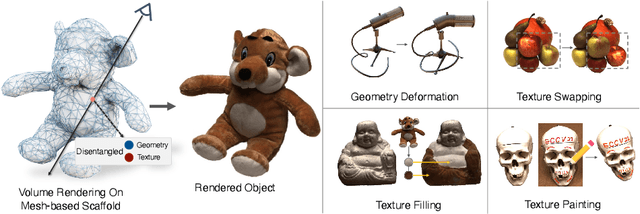

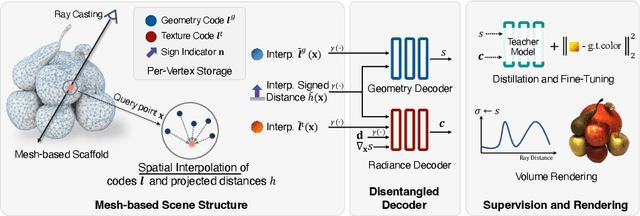

Abstract:Very recently neural implicit rendering techniques have been rapidly evolved and shown great advantages in novel view synthesis and 3D scene reconstruction. However, existing neural rendering methods for editing purposes offer limited functionality, e.g., rigid transformation, or not applicable for fine-grained editing for general objects from daily lives. In this paper, we present a novel mesh-based representation by encoding the neural implicit field with disentangled geometry and texture codes on mesh vertices, which facilitates a set of editing functionalities, including mesh-guided geometry editing, designated texture editing with texture swapping, filling and painting operations. To this end, we develop several techniques including learnable sign indicators to magnify spatial distinguishability of mesh-based representation, distillation and fine-tuning mechanism to make a steady convergence, and the spatial-aware optimization strategy to realize precise texture editing. Extensive experiments and editing examples on both real and synthetic data demonstrate the superiority of our method on representation quality and editing ability. Code is available on the project webpage: https://zju3dv.github.io/neumesh/.
 Add to Chrome
Add to Chrome Add to Firefox
Add to Firefox Add to Edge
Add to Edge